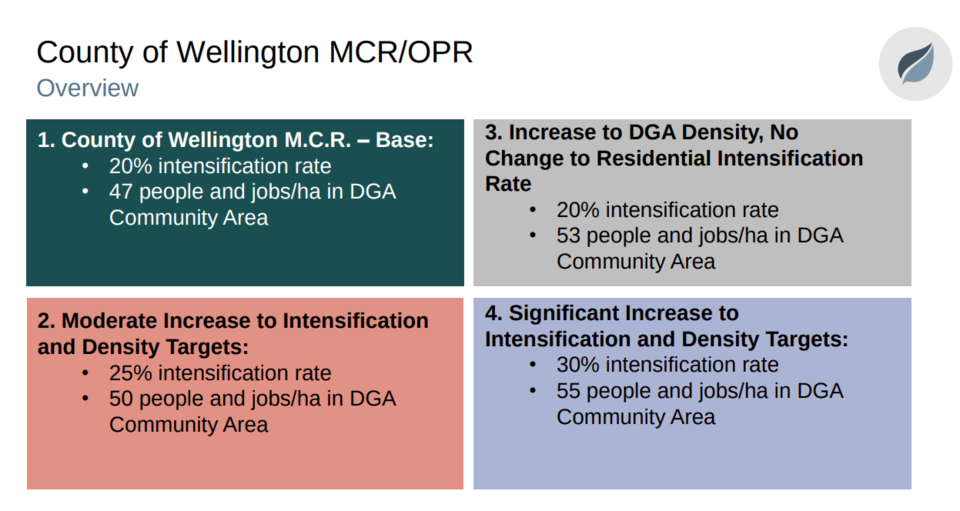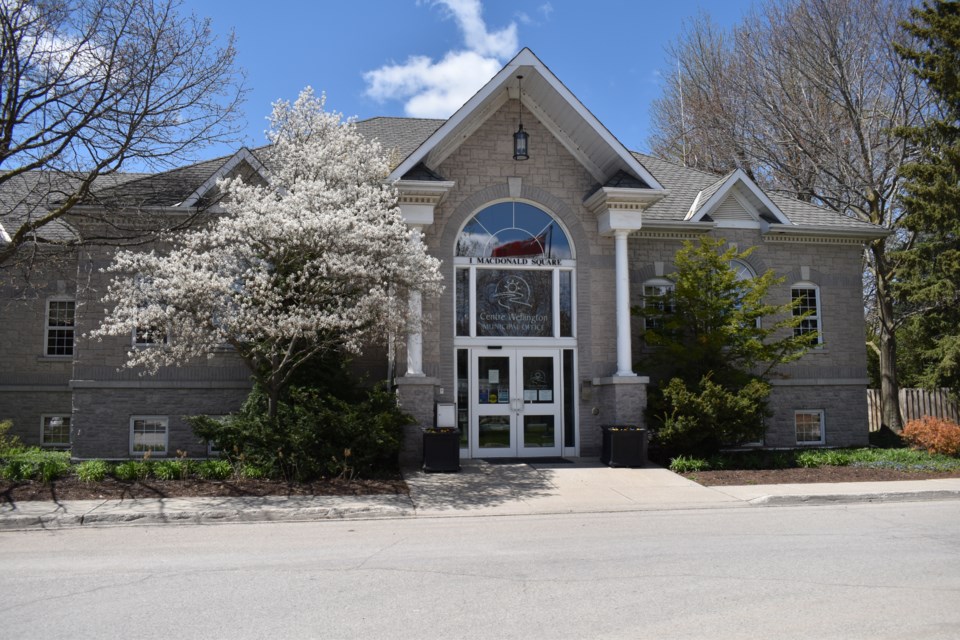CENTRE WELLINGTON ‒ Farmland and green space preservation were at the forefront of councillors' minds during a discussion about how to facilitate expanding the township's urban boundary to accommodate future growth.
In a new report from consulting firm Watson and Associates presented during a Centre Wellington committee of the whole meeting earlier this week, staff proposed several options to facilitate urban boundary expansion after a January study found an additional 398 hectares (983 acres) of land needs to be converted to community and employment lands if the township wants to meet the province's 2051 minimum growth targets.
O f the four options presented, consultants recommended the third, which proposes a 20 per cent intensification rate and 53 people and jobs per hectare.
f the four options presented, consultants recommended the third, which proposes a 20 per cent intensification rate and 53 people and jobs per hectare.
"This scenario retains the existing intensification rate and allows the township to gradually increase the amount of high-density units in the built-up area," said staff in the report. "Increasing the intensification rate would involve the greatest amount of transformation for the township."
However, Coun. Barb Evoy wanted to know where farmlands factor into each alternative, especially when comparing options three and four.
"I think it's really important we consider tomorrow when we're making these decisions," said Evoy. "(But) I'm not comfortable putting our farmland at risk."
Leaning towards option four, Coun. Bronwynne Wilton said she's looking forward to public input to help guide council in its decision.
"One by one we lose hundreds of acres of farmland every day," said Wilton. "So I think we have to take it very seriously in terms of our role and responsibility and how we protect that high-quality farmland."
Coun. Jennifer Adams had a similar request, asking for opportunities to prioritize green spaces, "particularly in the new communities."
"I think when we're talking about increasing the density, we all realize why this is necessary and very important for communities," said Adams. "And I think when we are looking at increasing that density, our natural space becomes even more important in what we want the community to look like.
According to staff, any empty land converted to green space comes out of the "density equation," and will increase the the remaining land needs.
The draft report will be posted on Connect CW to obtain input prior to the preparation of a final report, which is expected to come to council in January 2024.
Isabel Buckmaster is the Local Journalism Initiative reporter for GuelphToday. LJI is a federally-funded program.


.png;w=120;h=80;mode=crop)
